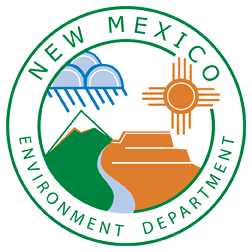Excessive deposition of sediment on the bottom substrate of streams and rivers can negatively impact aquatic life. Bottom substrate without excessive fine sediment filling the interstitial spaces provides optimum habitat for many fish and aquatic insect communities. Excessive fine sediment, or substrate fining, occurs when biologically-important habitat components such as spawning gravels and cobble surfaces are physically covered by fines (Chapman and McLeod 1987). Substrate fining results in decreased intergravel oxygen and reduced or eliminated quality and quantity of habitat for fish, macroinvertebrates, and algae (Lisle 1989; Waters 1995).
Sediment loads that exceed a stream’s sediment transport capacity can also trigger changes in stream morphology (Leopold and Wolman 1964). Streams that become overwhelmed with sediment often go through a period of accelerated channel widening and streambank erosion. These morphological changes can reduce habitat diversity (pools, riffles, etc.) and place additional stress on the designated aquatic life use.
Bedded sediments cannot be treated as introduced pollutants such as pesticides because they are not uniquely generated through human input or disturbance. Rather, bedded sediments are components of natural systems that are present even in pristine settings and to which stream organisms have evolved and adapted. Therefore, the detection of a sediment imbalance is more difficult than detecting an absolute concentration or percentage that represents a clear biological impact (Jessup et al. 2010).
Substrate characteristics may be considered impacted at a site if they are: 1) not similar to expectations for undisturbed sites in the same environmental setting, or 2) detectably affecting the biota. In the first case, substrate may be more fine, more coarse, more unstable, or more stable than expected under broadly-recognized, undisturbed conditions (reference or best available conditions) for that particular environmental setting. This, in itself, can be an indication that streambed substrates are impacted by human disturbance. Biotic responses to disturbed substrates can be variable, but sub-optimal biotic conditions are often associated with unbalanced sediment.
In 2008, the SWQB Sediment Workgroup was formed to review the previous sedimentation/siltation assessment protocol and recommend an approach for revision. As a result of workgroup discussions, SWQB and USEPA Region 6 contracted with Tetra Tech, Inc., to develop sediment translators or thresholds. The contractor generally followed the steps provided in USEPA’s Framework for developing suspended and bedded sediment (SABS) water quality criteria (USEPA 2006). Several staff from Tetra Tech, Inc., USEPA Region 6, and SWQB worked as a team to complete this effort.
This effort included the identification of sediment characteristics that are expected under the range of environmental settings in New Mexico, especially in undisturbed or best available reference streams. The goal of this characterization was to enable SWQB to identify situations where sedimentation/siltation expectations are not met, using sediment indicators that show responsiveness to disturbance. Examining the relationships between biological measures and sediment indicators helped to identify where disturbance caused sediment imbalance and biologically-relevant habitat degradation. The results of these analyses led to quantitative, sedimentation indicator threshold recommendations for New Mexico perennial streams.
The 100+ page final report (Jessup et al., 2010) detailing this effort, plus information on additional bedded sediment indictors as well as suspended sediment indicators, is available in the “Support Documents” box above. SWQB has also generated a Sedimentation/ Siltation Thresholds Development Plan which summarizes the seven steps taken to develop recommended bedded sediment thresholds. This plan also includes an abbreviated description of the previous sedimentation assessment protocol utilized during the 1998 – 2010 listing cycle as Attachment A, for historical purposes. SWQB’s revised sedimentation/siltation assessment protocol is available as Appendix C at: /surface-water-quality/calm/.
References:
Chapman, D.W. and K.P. McLeod. 1987. Development of Criteria for Fine Sediment in Northern Rockies Ecoregion. United States Environment Protection Agency, Water Division, Report 910/9-87-162, Seattle, Washington, USA.
Jessup, B.K., D. Eib, L. Guevara, J. Hogan, F. John, S. Joseph, P. Kaufmann, and A. Kosfiszer. 2010. Sediment in New Mexico Streams: Existing Conditions and Potential Benchmarks. Prepared for the U.S. Enviromental Protection Agency, Region 6, Dallas, TX and the New Mexico Environment Department, Santa Fe, NM. Prepared by Tetra Tech, Inc., Montpelier, VT.
Leopold, L.B., M.G. Wolman, and J.P. Miller. 1964. Fluvial Processes in Geomorphology. Dover Publications, Inc., New York.
Lisle, T. 1989. Sediment Transport and Resulting Deposition in Spawning Gravels, North Coast California. Wat. Resourc. Res. 25 (6):1303-1319.
U.S. EPA (USEPA). 2006. Framework for developing suspended and bedded sediment (SABS) water quality criteria. Office of Water, Office of Research and Development. EPA-822-R-06-001.
Waters, T. 1995. Sediment in Streams Sources, Biological Effects and Control. American Fisheries Society Monograph 7. Bethesda, Maryland.

